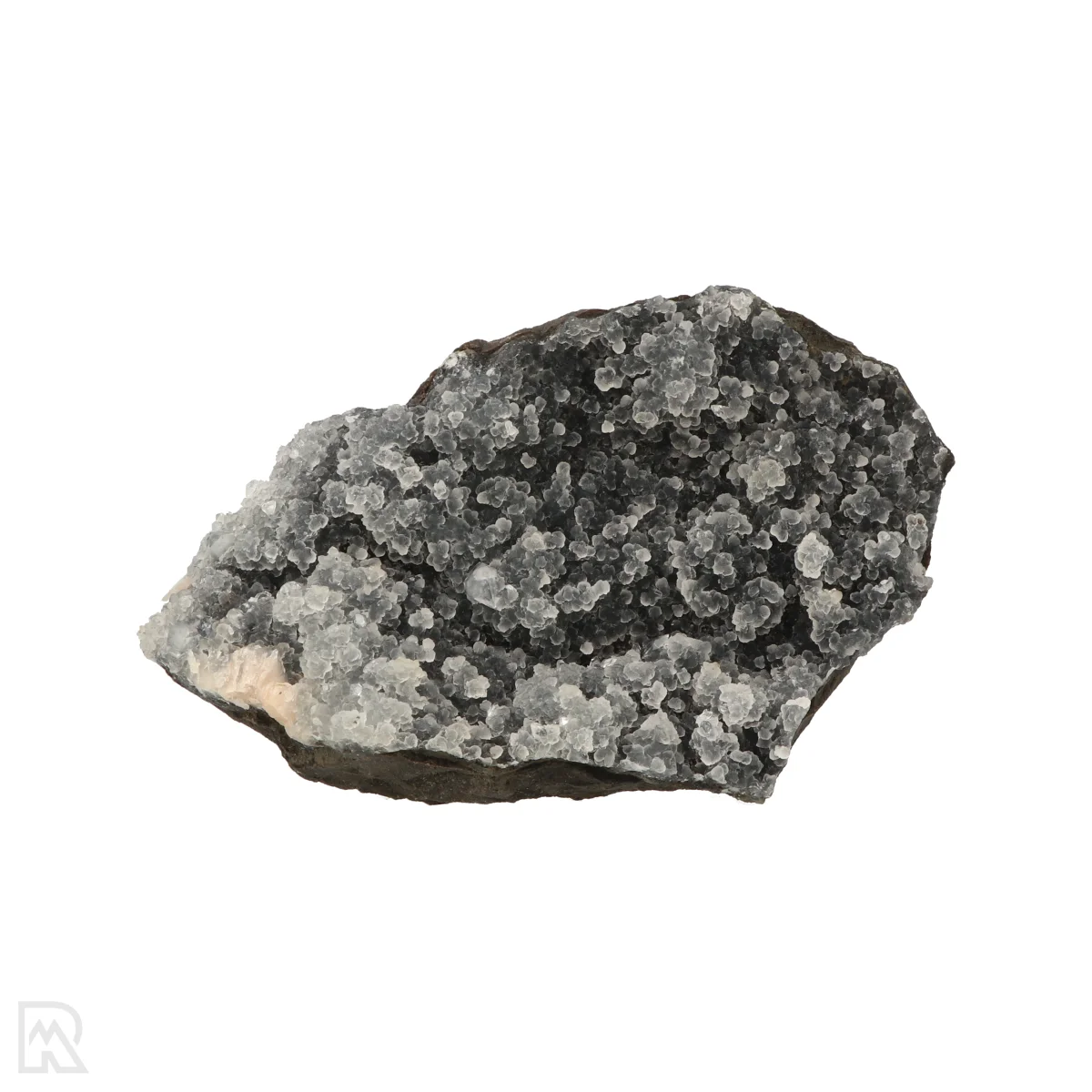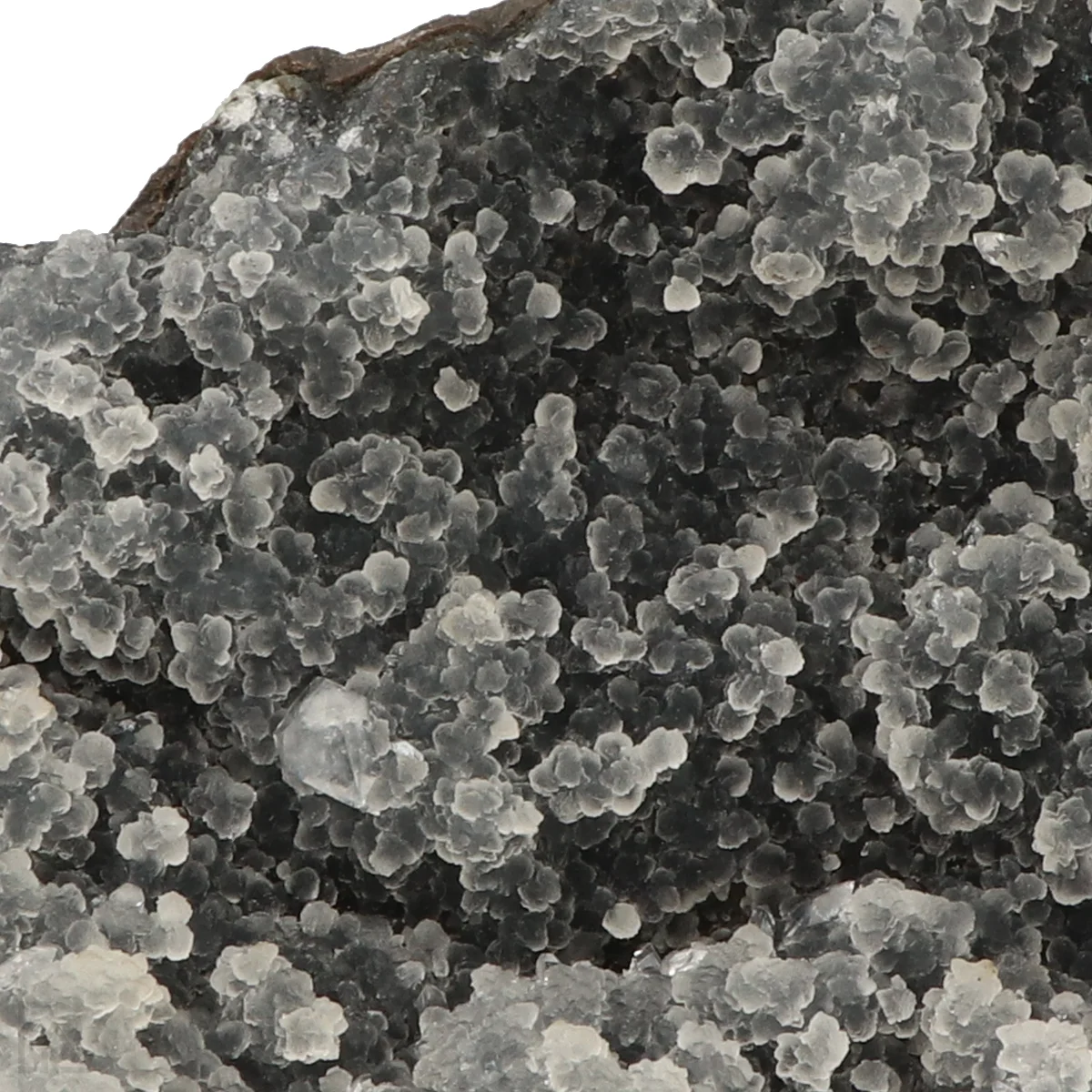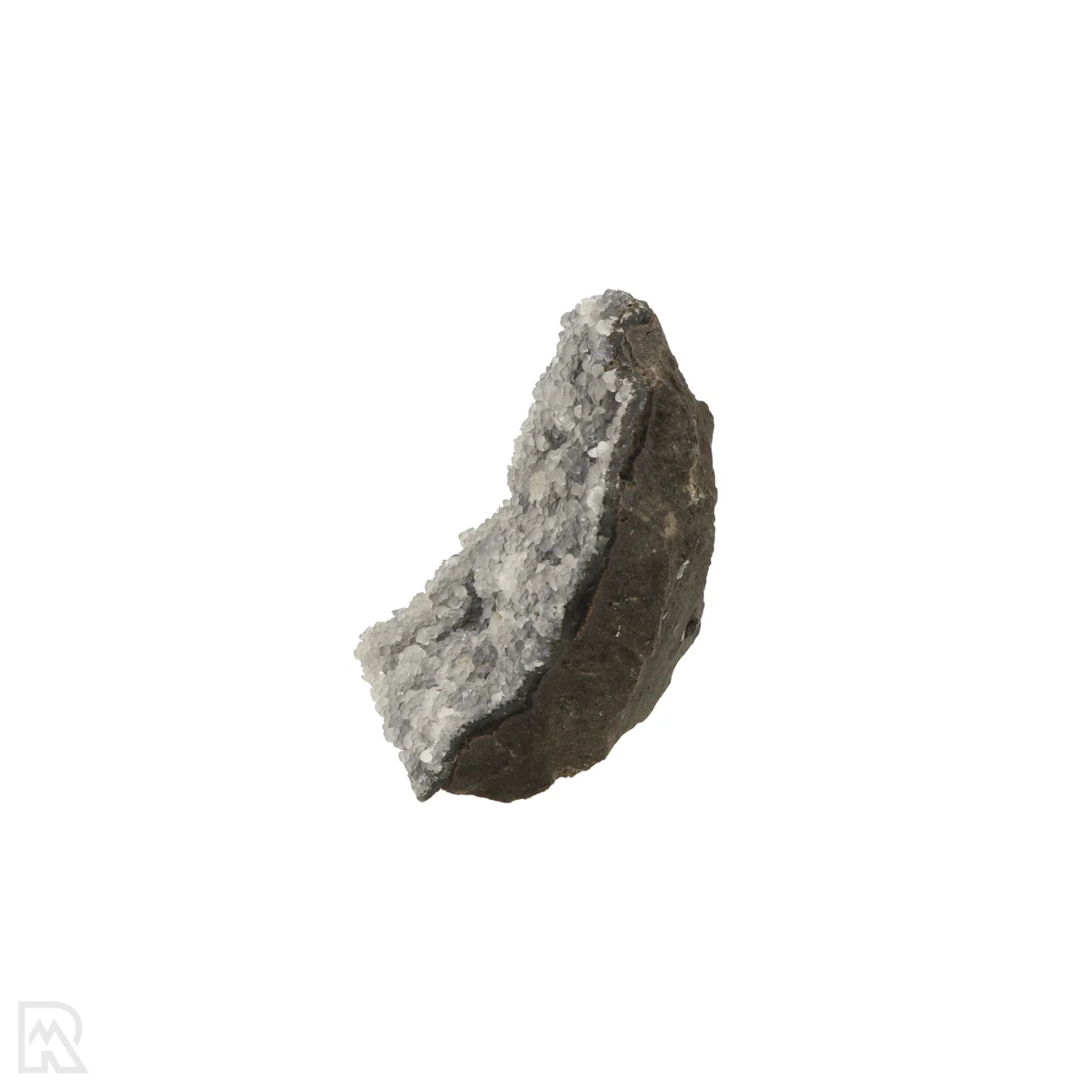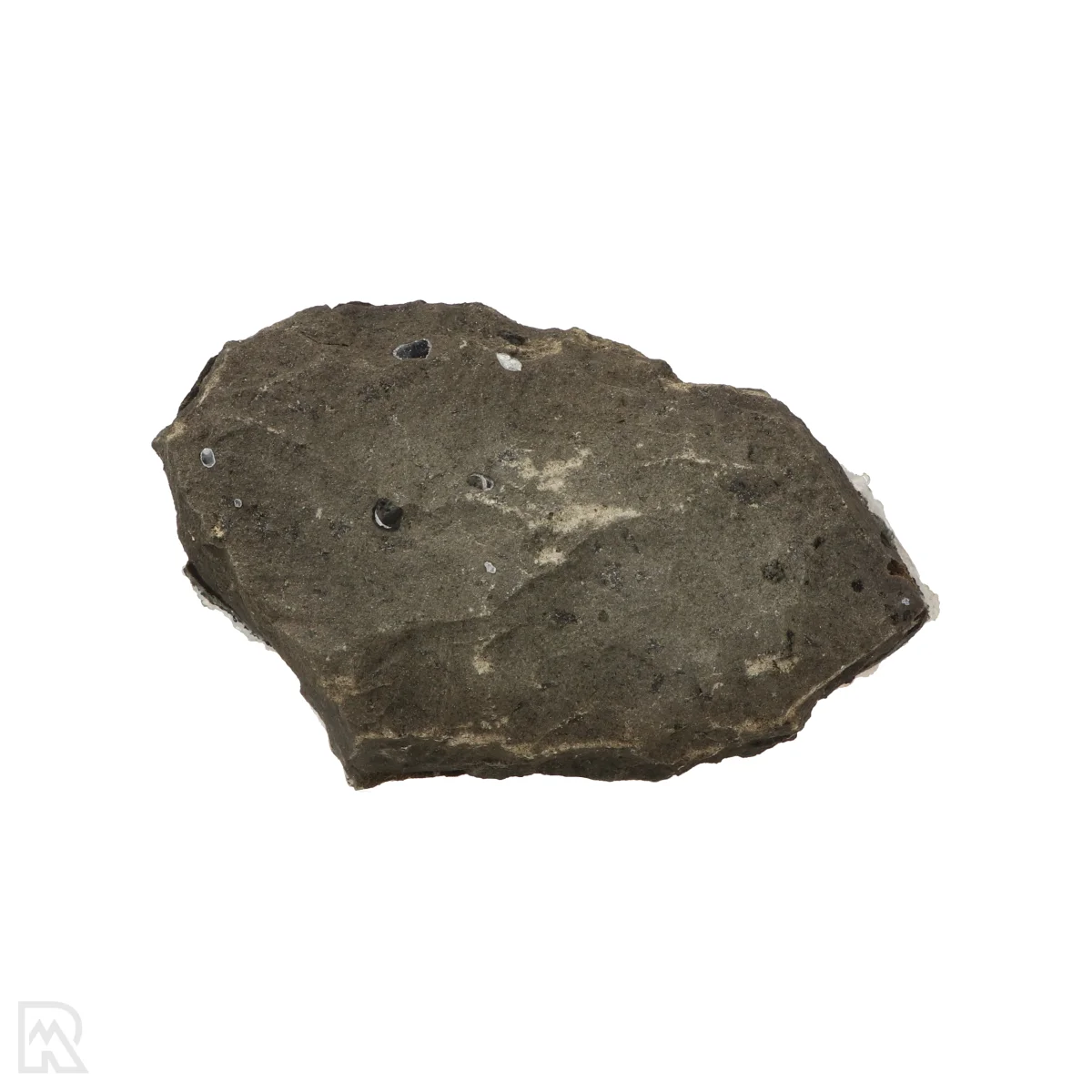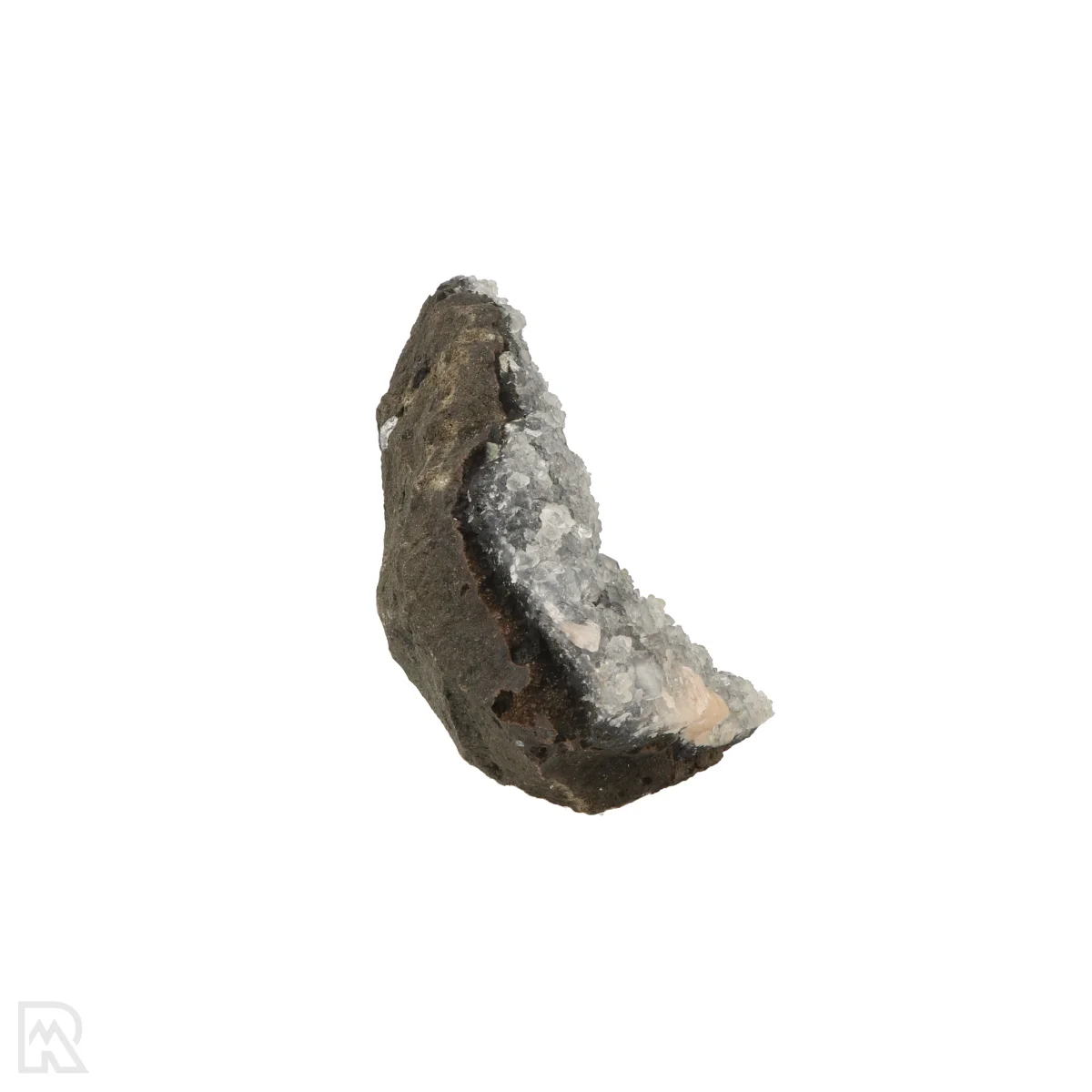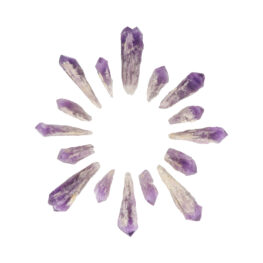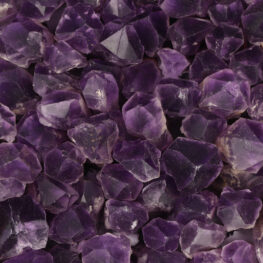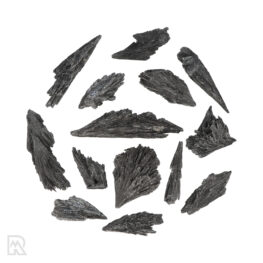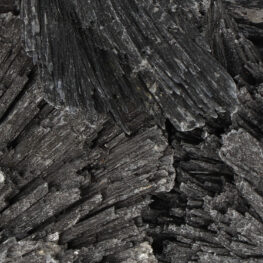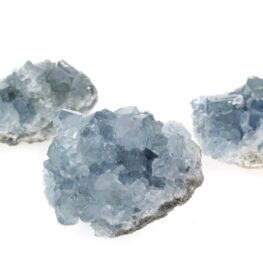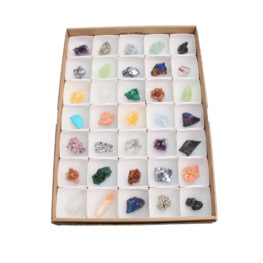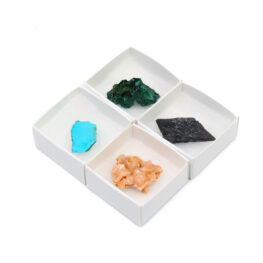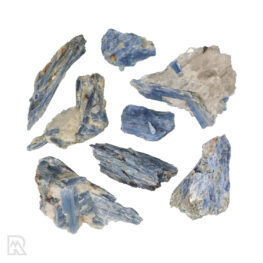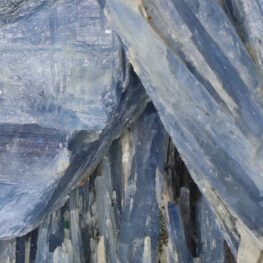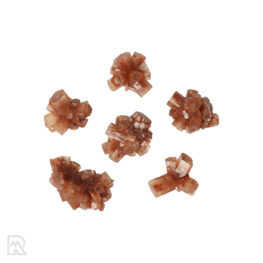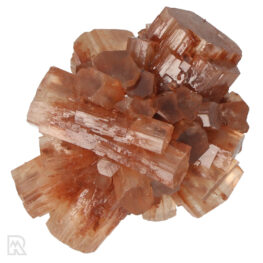| Gewicht | 0,718 kg (718 gr) |
|---|---|
| Dimensions | 4 × 9 × 13 cm |
| Sales Unit | |
| Type | |
| Form | |
| Origin | |
| SKU | 20051 |
Chalcedony with Apophyllite
Chalcedony with Apophyllite from India
Chalcedony
Chalcedony is a microcrystalline variety of quartz that occurs in a wide range of colours, with blue, grey and white being the most recognisable. The stone has a waxy luster and is often translucent. Due to its fine structure, chalcedony is widely used in jewellery and decorative objects.
Chalcedony forms in cavities of volcanic rock, where it deposits layer by layer from silica-rich solutions. It occurs worldwide, with important deposits in Turkey, Namibia, Brazil, the United States and India, among others. Its chemical composition is SiO₂ and its hardness is around 6.5 to 7 on the Mohs scale.
Sources:
Mindat.org, Gemdat.org, Wikipedia - Chalcedony
Apophyllite
Apophyllite is a group of phyllosilicate minerals often found in clear, prism-shaped crystals with a glassy to pearly luster. The colour ranges from colourless and white to green or pink, depending on traces of other elements. Because of its distinctive crystal shape and transparency, apophyllite is popular with collectors and is often found in combination with zeolites.
Major deposits include India, Brazil, Germany, Iceland and the United States. Apophyllite usually forms in the cavities of basaltic lavas and other volcanic rocks by hydrothermal processes. Its general formula is KCa₄Si₈O₂₀(F,OH)-8H₂O, and its hardness is between 4.5 and 5 on the Mohs scale.
Sources:
Mindat.org, Gemdat.org, Wikipedia - Apophyllite
